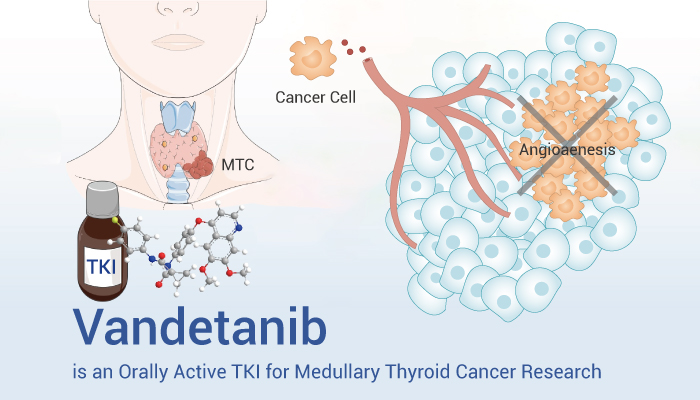Receptor tyrosine kinases (RTKs) are a subclass of tyrosine kinases that play imporrtant role in mediating cell-to-cell communication and controlling a wide range of complex biological functions, including cell growth, motility, differentiation, and metabolism. Receptor tyrosine kinases (RTKs) play an important role in a variety of cellular processes including growth, motility, differentiation, and metabolism. As such, dysregulation of RTK signaling leads to an assortment of human diseases, most notably, cancers. Recent large-scale genomic studies have revealed the presence of various alterations in the genes encoding RTKs such as EGFR, HER2/ErbB2, and MET, amongst many others. Abnormal RTK activation in human cancers is mediated by four principal mechanisms: gain-of-function mutations, genomic amplification, chromosomal rearrangements, and/or autocrine activation.
The VEGF/VEGFR system is an important target for anti-angiogenic therapy in cancer and for pro-angiogenic therapy in neuronal degeneration and ischemic diseases. Currently, VEGFR consist of three main VEGF receptors VEGFR1 (Flt-1), VEGFR2 (KDR), VEGFR3 (Flt-4), and two non-protein kinase co-receptors neuropilin-1 and neuropilin-2 (NRP-1 and -2). The VEGFR1 and VEGFR2 regulate angiogenesis and vascular permeability, and the VEGFR3 mainly regulates lymphangiogenesis. Among them, VEGFR2 is mainly distributed in vascular endothelial cells and acts as major signal transducer for angiogenesis by PLCγ-PKC-MAPK, PLCγ-PKC-eNOS-NO, TSAd-Src-PI3K-Akt, SHB-FAK-paxillin, SHB-PI3K-Akt, and NCK-p38-MAPKAPK2/3 pathways. VEGFR2 is a primary responder to vascular endothelial growth factor signal, and thereby regulates endothelial migration and proliferation. This receptor is expressed in endothelial cells and some vascular tumors, but many reports also detail its expression in carcinomas and lymphomas.
Vandetanib (D6474) is a potent, orally active inhibitor of VEGFR2/KDR tyrosine kinase activity
Vandetanib acts as a tyrosine kinase inhibitor (TKI) of cell receptors including EGFR, VEGFR and RET-tyrosine kinase. Thus, Vandetanib inhibits non-small cell lung cancer (NSCLC) cell line Calu-6 cell migration and invasion. However, Vandetanib also induces autophagy through reactive oxygen species (ROS) to antagonize the inhibitory effects on tumor cell growth. Therefore, inhibition of ROS or autophagy enhances the sensitivity of Calu-6 cells to Vandetanib. In addition, Vandetanib can directly inhibit RET activity, which influences the Rho-JNK pathway.
All in all, Vandetanib (D6474) is a potent, orally active inhibitor of VEGFR2/KDR tyrosine kinase activity for NSCLC research.
References:
[1] Du Z, et, al. Mol Cancer. 2018 Feb 19;17(1):58.
[2] Wang X, et, al. Front Cell Dev Biol. 2020 Nov 16:8:599281.
[3] Zhou Y, et, al. Sci Rep. 2015 Feb 27:5:8629.
